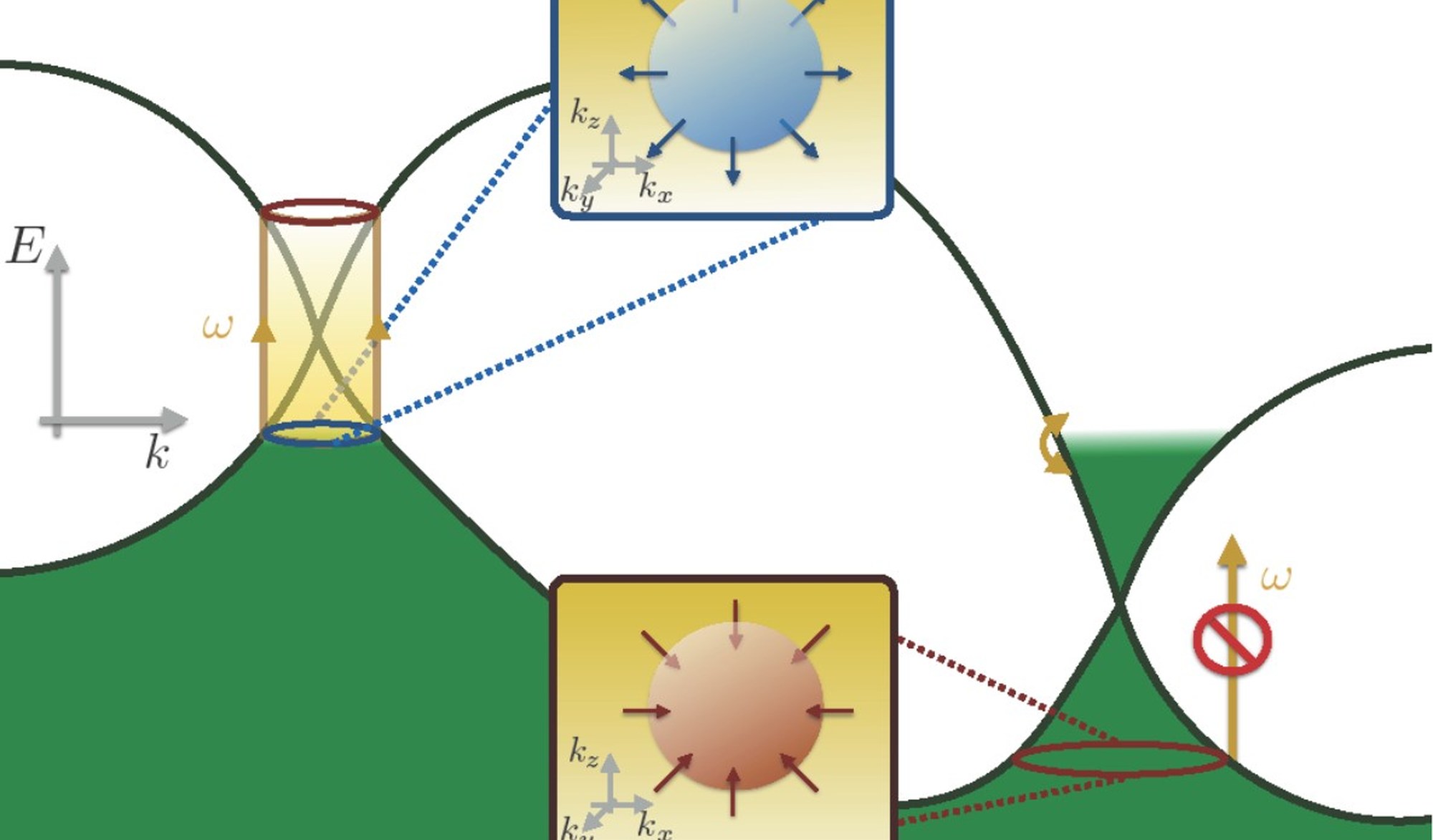Photovoltaic effects in topological and magnetic materials

Internship
Type of Project: Theory
Location: Donostia
Supervisors:
Fernando de Juan
In crystalline materials without inversion symmetry, electrical currents can be generated upon light illumination in what is known as the bulk photovoltaic effect. This effect differs in many ways from the standard photovoltaic effect used in solar cells, and in particular it allows access to fundamental properties of the electron wavefunctions in the crystal. The theory to describe it is still in development after decades of research. And in addition, while the magnitude of the effect has never been large enough to compete with solar cells, there is no intrinsic limit that precludes this, motivating the search of new photovoltaic materials.
In our previous work, we have developed a simple model to understand the linear photovoltaic effect (produced by linearly polarized light) for many materials with direct band gaps, but this model fails to describe more general band structures. In addition, like most theory in the field, it applies only to non-magnetic materials. Given the very recent development of 2D magnetic insulators, we will extend the theory to this case and make concrete predictions for experiments.
In another work, we have also shown that when circularly polarized light is shone on a class of materials known as topological semimetals realized in chiral crystals, the current that is produced is quantized in terms of fundamental constants only. The first materials to measure this effect have only become available in 2018 as well. Another direction is to generalize the prediction to the case of ultrafast pulsed light (as opposed to constant illumination), relevant to current experiments
